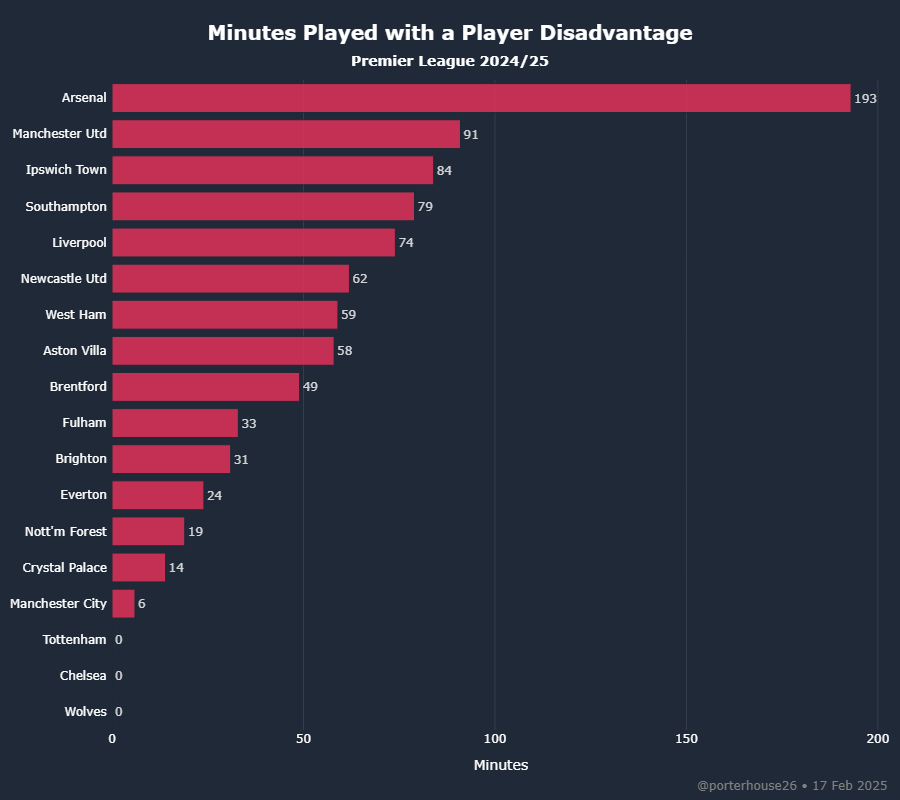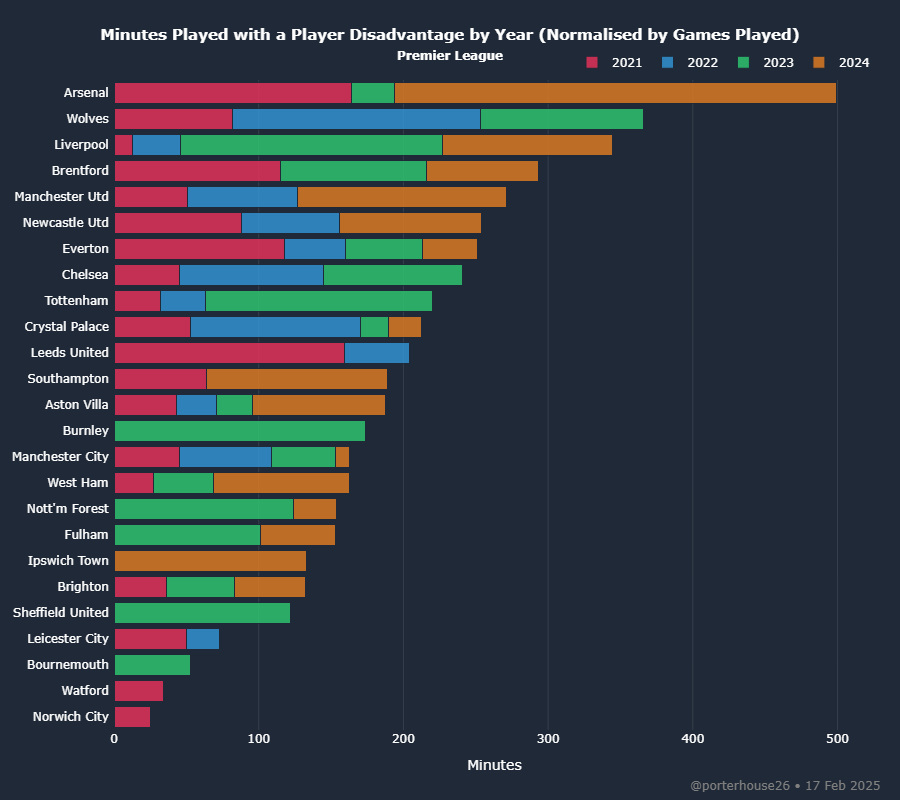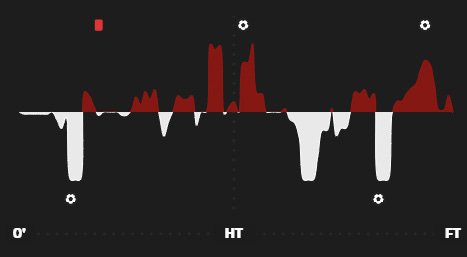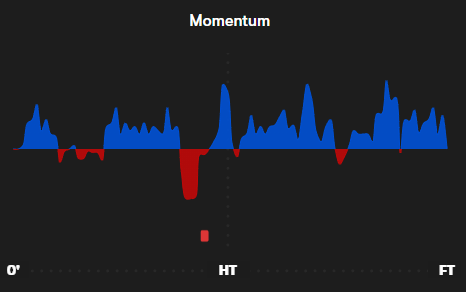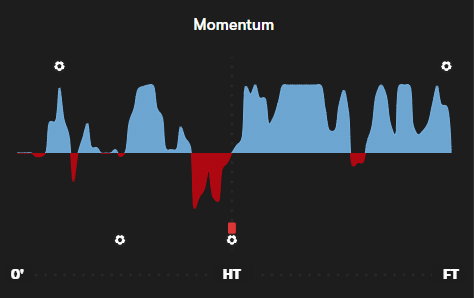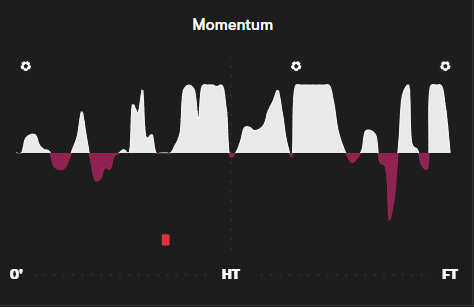Red cards are a big deal. They completely alter the course of a match. When a team goes down to ten men, the game often becomes less entertaining, with one team hunkered down in their own half fighting for their lives (unless your team is managed by Ange Postecoglu). To compound the punishment suffered during the match, the guilty player also receives a suspension, the length varying on the severity of the offence. That is unless the red card is overturned after the fact, which could be considered even more frustrating considering your team faced an unjust punishment when points were on the table. A team faces a large decrease in goal expectancy when down a man, with Mark Taylor estimating the figure to be 1.45 goals over the course of an entire game (my research suggests this figure could be even higher now in 2025).
The large negative effect raises questions about whether the punishment fits the crime. Especially given that the bar for sending someone off seems to vary from game to game, sometimes becoming incredibly low (not just a bitter Arsenal fan, promise). Penalties mirror this dilemma, giving a team a ~80% chance of scoring for an accidental handball doesn’t seem like justice. While this isn’t the point of the blog post, it’s worth considering whether something like the sin bin might actually be a welcome change in football, as something of an “in-between” of a red and yellow card.
I was inspired to perform this research based on two key items, I am currently building a new team strength model, hopefully improving on the last one, and I want to take a more granular approach to dealing with red cards. It doesn’t take scraping and analysing a large dataset of event data to come to the conclusion that red cards negatively impact a team’s performance, but what I find interesting is how different teams react. There are varying strategies to dealing with a man disadvantage, you have different ends of the spectrum with Ange Postecoglu seemingly taking the approach of putting your fingers in your ears and going “la-la-la” while continuing to play a risky high line. Meanwhile, on the other end, you get teams who no longer want to attack at all, Arsenal away at the Etihad this year is a prime example of this. It all boils down to context: the game state has a big effect, a team is likely to react very differently to a sending off when leading 1-0 with 5 minutes to go, versus being 1-0 down with 5 minutes let. Then you also have to consider if “that’s just who they are, mate”, philosophy is a big factor. There are many other aspects to contextualise too, like opposition strength and table position, hence why I want to go deeper than the surface level analysis.
Supporting Arsenal has also thrust this topic into my consciousness far more than usual this season. Their red card situation this season is unusual in two ways. First, they've received 4 red cards in 25 games, when teams typically see around 2 in a full season (looking back to 2020) - this would happen roughly 1 in 20 times by chance. More striking is how long they've played with a player disadvantage - 193 minutes already, when teams usually spend about 69 minutes a man down across an entire season, this occurrence appears to happen less than 1 in 50 times by chance.
Red card data is limited by nature as it’s a rare event, so take these probabilities with a pinch of salt, I am just trying to illustrate a point. The only conclusions we can come to here is that Arsenal have suffered some bad variance, or that they have a higher underlying red card rate compared to other teams. I would lean towards the former, especially given the nature of these sending offs, with one being overturned after the fact.
Anyway, that’s enough moaning from me for one blog post. But hopefully that has given you an idea as to why I am more interested in red cards than usual at the moment.
To examine how red cards affect team performance, I analysed Premier League matches over the past four seasons, collecting shot data from before and after red card incidents. This analysis accounts for matches where both teams received red cards, allowing me to study the impact of player disadvantage rather than specifically red card scenarios, since 10 vs 10 situations should theoretically mirror 11 vs 11 play.
The four-season scope provides a focused but limited dataset, as mentioned before, red cards are relatively rare occurrences. However, this recent time window offers particularly relevant insights given the Premier League's rapid evolution. The league has seen huge growth in quality and intensity over recent years, making it distinctly different from what it was a decade ago.
Below is a chart displaying the times each team has spent with a man disadvantage over the this timeframe, with the 2024 season normalised by the number of games played. Further demonstrating my point earlier, Arsenal are top with their 2024 minutes being larger than a lot of other team’s entire span.
What I also find interesting is that lots of teams (that have not faced promotion/relegation), including Arsenal, managed entire seasons without a sending-off. This raises an intriguing question: What competitive advantage does excellent discipline provide?
To quantify this, let's examine the impact of red cards on team performance:
11v11:
Average xG per minute: 0.016
Typical match xG (95 minutes): 1.52
Man disadvantage:
Team’s xG per minute drops 65%: 0.0056
Opposition’s xG per minute rises 53.75%: 0.0246
The impact of a red card for an entire match (assumed as 95 mins) amounts to a 1.805 expected goal reduction - an increase from the 1.45 figure identified by Mark Taylor in 2013.
This calculation makes me realise that maybe I am just a bitter Arsenal fan, as if you take that 1.805 and attribute it to the 193 minutes Arsenal have spent a man down this season, they still don’t come close to Liverpool’s expected goal difference - even before accounting for Liverpool’s own time playing short-handed.
To close off this post, let’s take a look at the direct effect of red cards on team performance this season. Once again, I will caveat this by mentioning the small sample size we have with red card minutes, so take any wider considerations with a pinch of salt.
The chart below shows the percentage change that teams displayed on expected goals for and against when they were at a man disadvantage against their standard level across 2024/25. This also only contains teams who have spent at least 45 minutes in this state.
Liverpool remain clear at the top, with their attacking output dropping by just 15.2% and their defensive performance declining by only 33%. They've faced two red cards this season, totalling 74 minutes – all of which came in their home match against Fulham (the second red card occurred after the final whistle at Goodison Park).
The Fulham match provided interesting context. Liverpool went down to 10 men in the 17th minute, shortly after conceding the opening goal. This forced them to take the initiative, spurred on by an angry Anfield crowd. They equalized in the 47th minute, only to fall behind again in the 76th. This second setback required another push forward, resulting in an 86th-minute equalizer for the final 2-2 scoreline.
This context helps explain why Liverpool have been the league's best-performing team when facing red cards. Not only are they the strongest side overall, but their red card came early in a home game where they were already trailing. This situation demanded an attacking approach rather than trying to protect a result. The momentum chart from Fotmob illustrates this dynamic perfectly.
Brentford ranks as the next best performing team overall. In this limited dataset, they are the only team to show improved expected goals performance after a red card, with their defence improving by 19.2%. While their attacking output dropped significantly by 89.1%, their overall performance remains second-best in the league during such situations.
Their entire 49-minute experience with a red card came in a single match at Goodison Park against Everton. Captain Christian Nørgaard was sent off for a challenge on Pickford (a decision later overturned) with the score at 0-0 – a scoreline that would remain unchanged at the full-time whistle. Unlike Liverpool's approach, they were content to protect the draw, a strategy they executed successfully.
Brentford's defensive display proved resolute, as they absorbed Everton's pressure throughout. Despite conceding 27 shots, they limited Everton to just 1.2 expected goals. Important context here is Everton's poor attacking record, which made Brentford's defensive strategy more viable than it might have been against stronger opposition. The momentum chart from Fotmob illustrates this narrative perfectly with Everton dominating territory.
Arsenal ranks as the second-worst team in overall effect when playing with ten men. Notably, they have the most extensive data in this scenario, making their performance data the most informative.
Their red cards have occurred across four different matches, with three coming in the first half of play. The outcomes have varied against diverse opposition: they drew away at the Etihad after defending a 2-1 lead for most of the second half; drew at home to Brighton after conceding with ten men; lost decisively at Bournemouth after Saliba's dismissal at 0-0; and beat Wolves away – though their goal for 1-0 came only after Wolves also had a player sent off. Effectively, they've achieved no positive results while at a numerical disadvantage.
The context of these incidents differs significantly from Liverpool's. Arsenal received their red cards while either winning or drawing, and predominantly in away fixtures. This circumstance, combined with Arteta's conservative tendencies, has led Arsenal to adopt a more defensive stance in these situations. Additionally, the quality of their opposition – Wolves being the exception – has been consistently high. Playing with ten men for an entire half at the Etihad while protecting a lead arguably justified their defensive "park the bus" strategy. The Fotmob momentum chart from the City match reveals the intense pressure Arsenal faced in the second half, though it's worth noting that until John Stones' late equalizer, Arsenal's defence appeared largely secure.
Finally, we have the worst performing side in Aston Vila. The vast majority of their red card minutes came away in a 3-0 loss at Newcastle, where Jhon Duran was sent off in the 32nd minute once they were already 1-0 down. Their other sending off came in the 93rd minute of a 3-1 win against Fulham and therefore is not that interesting to consider.
Villa basically got battered in this match against Newcastle. Whatever approach they tried to take did not work at all. Their defensive output became 222.8% worse than usual and their attack also faltered. Being a goal and a man down away at St James Park is not the easiest of circumstances to come back from, the Villains would have had to come out of their shell somewhat and this was clearly punished. It’s also worth mentioning that this was on Boxing Day, when Newcastle were on a great run of form.
The last momentum chart, courtesy of Fotmob tells the story that the game was relatively even before Duran’s red, and then quickly devolved into Newcastle domination.
The essence of this post boils down to: context matters, when you're trying to evaluate team performance with ten men, the small amount of data means that the specific match context ends up mattering more than anything else. Game state, opposition quality, and even whether you're home or away all play huge roles in how things turn out.
That said, the analysis has confirmed what we all intuitively know - red cards make you a lot worse, on average (duh). The data shows that teams' attacks take a bigger hit than their defenses do. The value of a red card in expected goals was calculated at 1.805, which is incredibly high when you look at some of the red card decisions we've seen this year.
Going back to my earlier point, maybe there needs to be some higher bar set for stupid second yellows. Not only does the punishment of a red card usually feel like it outweighs the crime that produced it, but it also tends to kill the game as a contest.
To wrap this up - this analysis has been really interesting for thinking about how to incorporate red cards into my new team strength model, but it's also confirmed that as an Arsenal fan, I can definitely keep moaning about how many we've seen this year.


